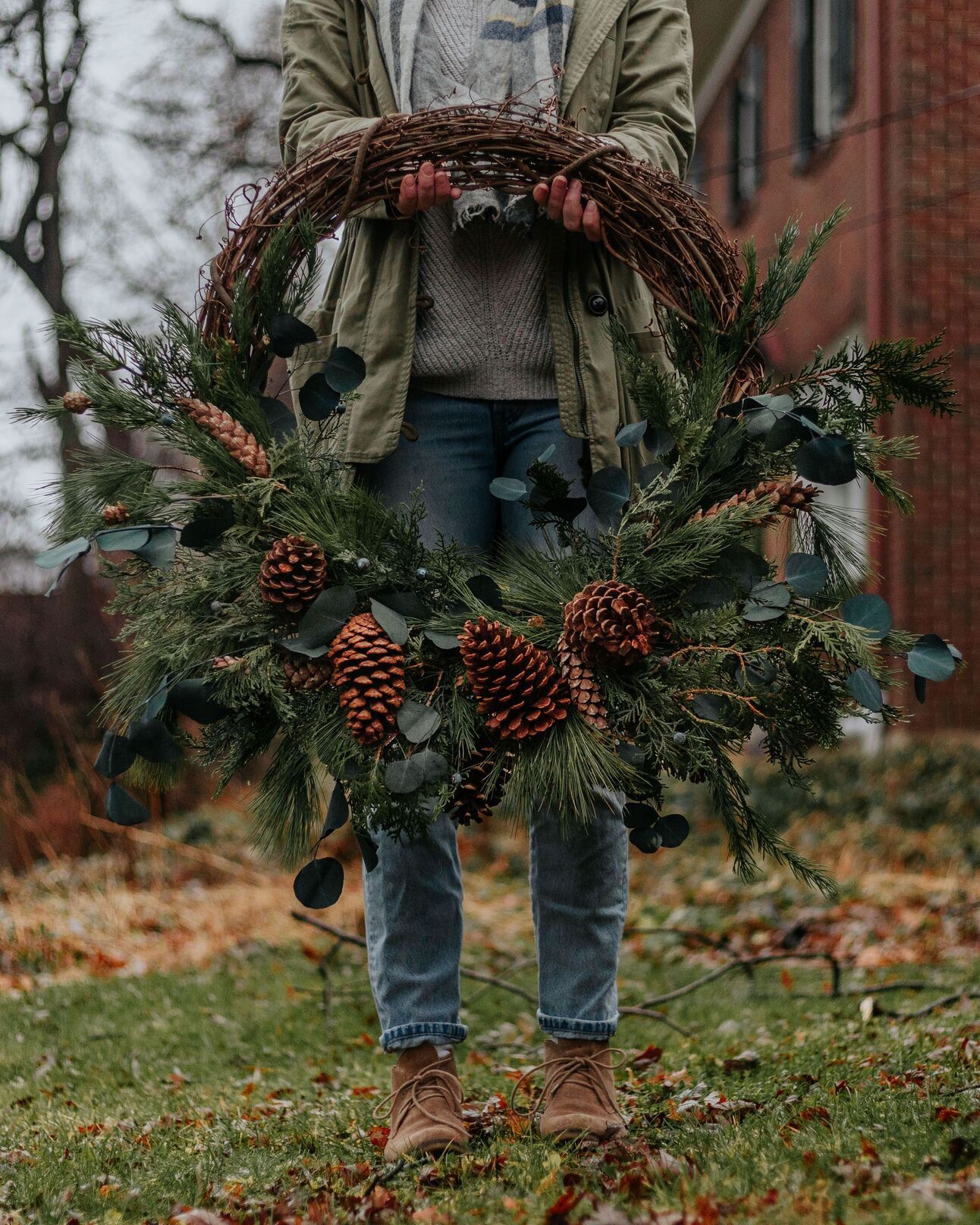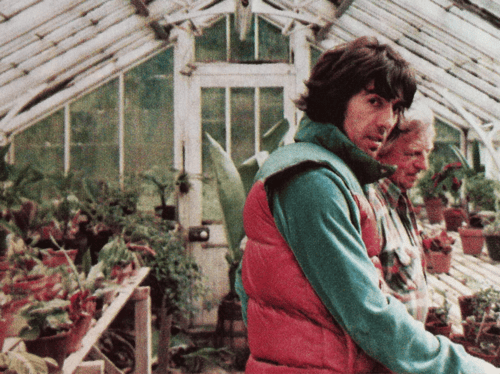- Garden People
- Posts
- 🐝 Issue 39: Through the woods
🐝 Issue 39: Through the woods
A foraged winter wreath
Finding the perfect wild, whimsical holiday wreath is difficult. Creating one is not.
In fact, making your own holiday wreath is simple and far more cost effective than the pre-made variety.
The trick is using foraged greens as your base. From there, you can add more foraged or store-bought bits and bobs to bring it to life.
How and where to forage
When it comes to foraging, any evergreen tree is a great option. This could mean pines, spruces, firs or even arborvitae. You can also consider evergreen shrubs, like holly or boxwood.
More often than not, I find a hodgepodge of different evergreens creates the best and most natural result. But if a more uniform look is your style, go all in on one to two varieties.
If you have a yard, this may be as far as you need to go to forage. Look around and take stock of trees and shrubs that stay green year round.
If you don’t have a yard, a friend or family member’s house may do the trick. I still use some evergreens from my parents yard, and they live several hours away. I just cut a few branches when I visit over Thanksgiving, put them in a garbage bag, and bring them home with me (don’t worry about any special treatment when transporting).
When cutting the greens, find a small branch attached to the tree or its limb. Cut it as close to the base as possible. That’s all you’ll need to do until you are ready to assemble your wreath.
When it’s time for assembly, simply cut individual stems off the main branch.
What you’ll need
Your materials list for a project like this is very simple. You’ll need:
A grapevine wreath or wire wreath frame (purchase from a craft store or an online retailer)
Scissors, pruners, or loppers to cut evergreens
A glue gun
Green floral wire
Foraged greens, for the base
Any details you want to add. Some ideas:
Berries, cut from berry-producing trees or faux
Faux greens that are hard to forage, like eucalyptus or magnolia leaves
Dried flowers
Seedheads (foraged, faux or store bought)
Pinecones (from the yard or craft store)
Dried fruit, like orange slices
Cinnamon sticks
Ribbon, if you’d like
How to assemble
To start, decide if you want to fill your wreath completely, or leave a portion bare.
Start by bundling some evergreen stems together and securing it with floral wire (no trick here, just wrap it a few times and twist the wire to secure).
Continue doing this every few inches until your wreath is covered. If you’re covering the wreath fully, keep the evergreen stems facing the same direction. If you’re covering only a section, you could consider placing the stems so they are moving outward from the middle.
That’s the bulk of the work.
From here, you can add a few details to bring it to life.
Spread them across the wreath, or cluster them in specific areas for a bigger impact. It helps to lay them out on top of the wreath before securing, so you can easily make changes.
When you’re ready, secure stems of berries, faux/dried florals, or pinecones with floral wire. Other elements may benefit from a dab of hot glue for extra adhesion.
I like to top off any wreath with a cluster of battery-operated fairy lights (much easier than plug-in lights), woven throughout. Secure the battery pack behind the greens by wrapping floral wire around it and the wreath several times.
Create a loop from floral wire, tethering it to the wreath. Then, secure the loop on a wreath hanger or a suction cup hook, and you’re done!
The foraged greens on the wreath will last for 1-2 years before you need to change them out.

My foraged wreath!
I am out with lanterns looking for myself.
📺 Series I’m watching
While under the weather this week, I stumbled onto a series called The Gilded Age.
It takes place in New York in the late 1800s, a time of economic boom, stunning clothes and drool-worthy interiors.
The series is from the writer Julian Fellowes, of Downton Abbey fame—so if you loved getting lost in the halls of Downton (like me 🙋♀️), I’m certain you’ll love The Gilded Age.
🍄 What I’m inspired by
George Harrison is magic. George Harrison as a gardener is other-worldly.
Almost everyone knows Harrison as one fourth of the Beatles, but it might be surprising to learn that George was an avid gardener.
Friar Park, or Crackerbox Palace as he called it, was George’s homestead—a large house surrounded by a sprawling 36 acres. George spent much of his time clearing away the weeds and overgrowth himself (!), and took on the garden’s restoration over many years.
George was so busy in the garden that his son, Dhani, said that when he was a child he thought his dad’s job was being a gardener.
In 2008, to commemorate George seven years after his death, his wife designed a memorial garden, complete with garden gnomes, that was featured at the Chelsea Flower Show.
Garden gnomes are banned from the show (a funny detail on its own), but the rule was overlooked for George’s memorial garden.
It caused quite a stir, which I imagine would have pleased George very much.

George in his greenhouse, Friar Park
I think I’ll add some sprigs of red berries to last year’s foraged wreath. If you try a foraged wreath, reply with a photo—I’d love to see it!
Xx,
Courtney
